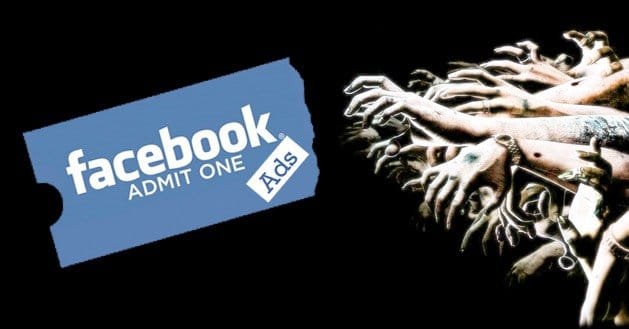 Written by ContentPowered.com
Written by ContentPowered.com
As increasing amounts of marketing dollars flow into social media and online mediums, there is a lot of confusion, numerous misperceptions, and outright myths concerning the various ad networks and ways to use them. Here are 10 myths to consider when you’re evaluating the Facebook ad network as an advertising choice.
Myth No. One – The Facebook ad network is as effective as Google’s.
Several of the myths discussed here will come back to the same factors, one of them the weakness of today’s attribution models. This bears heavily on the overall impressions of the relative value of different social media and online advertising networks. When Google surpassed Facebook with its display advertising of over $2 billion in 2012, it seemed to underline market perceptions of the two networks.
The rapid and significant success of Google+ has emphasized this market concern. However, it is important to note the Google success is based on providing more than display ads. As both of the companies compete fiercely, with Apple and Yahoo playing distant catch up, how this myth will eventually play out is an open issue closely watched by advertisers and Wall Street.
The reality is that charging for an ad-free premium service would generate hundreds of millions of dollars in net income for the company, even if only a few percentage points of users joined.
However, Facebook COO Sheryl Sandberg recently denied any plans in a recent interview with Business Week. She points out the company is currently profitable based on current advertising results and has no plans to offer memberships free of those vital advertisements.
Myth No. Three – Facebook didn’t really care about advertising until it went public.
An early understanding existed in the Facebook team concerning the essential need for and potential of advertising for the platform. The book, The Facebook Effect, by David Kirkpatrick, discusses a meeting in 2005 where potential investors were pitched on the idea of a concept called AdSeed, a proposed social media version of Google’s AdSense. Interestingly, this approach is coming close to a reality, but on the mobile of Facebook rather than the website itself. (See Myth Five)
While there has been an awareness of the need for a growing base of revenue within the company, this myth is driven in part because of Zuckerberg and the team being slow to put aggressive action to the realization.
Myth No. Four – Facebook is building its advertising revenue to sell to Google or some other major firm.
This is probably fed by the dreams of investment bankers lusting after the enormous fees involved in any such transaction. While Zuckerberg at one time talked to Yahoo about a billion dollar price tag, things have, of course, changed dramatically. While revenue from advertising drives the company, Zuckerman and management continue to emphasize their first priority is connecting people online, not selling advertising.
Of course, the size of Facebook’s valuation makes it a target only a few can consider. It’s certainly not likely another Time Warner – AOL debacle will occur, but, as they say, anything is possible.
Myth No. Five – Facebook doesn’t care about mobile ads.
Until recently, there was some truth to this one. As noted above, Facebook has responded to being a public company and the pressure to build real earnings, it is now much more aggressive on all possible advertising fronts. The acquisition of Parse is just one part of the investment Facebook is making to build its mobile ad network.
As recently as January 2014, the company was somewhat quiet about the mobile ad market, letting Google and Apple get a strong early start. It has now announced, however, the creation of a team committed to a mobile ad network. The Facebook effort is currently focusing on how to use the assets of Parse with a small group of advertisers and experienced app developers. These early ads are being delivered directly to mobile apps, rather than through a third-party network.
The Facebook plan is apparently to use its extensive knowledge about its users to offer programmers and businesses the ability to use apps fed by the nascent Facebook mobile ad network.
Myth No. Six – There are plans afoot to make money advertising with your pictures.
A large amount of venture capital funding is going into rich media and attempts to commercialize digital still photos, especially with contextual ads. With the millions of pictures added to Facebook daily, it certainly is tempting to try and figure out how to generate an advertising stream from the the billions of posted photos and images.
Once again, it seems wiser heads rule at Facebook in at least this area. There were changes recently in the company’s Terms of Service that raised the hackles of many, seeming to indicate Facebook was indicating it had the right to use those pictures, even from deleted accounts. Zuckerberg took the time in a follow up blog to explain the changes were more to provide fuller disclosure, not to expand the rights of its license. He committed to clarifying this language and reassure members their pictures would not be a part of the ad network.
Myth No. Seven – Views don’t matter on Facebook’s ad network, only clicks.
As with most things in advertising and in life, balance is a key to effectiveness. Numerous studies have shown that a greater level of conversions will occur on Facebook when ad frequency is increased. So, yes, views do matter. However, too much of a good thing is not a good thing – over saturation will decrease conversion rates.

Myth No. Eight – Short-term strategies are the way to make Facebook work.
Buying online advertisements on any ad network are all about the ROI. There has been an impression by many that advertising on Facebook only works if ads are designed to impact consumers immediately.
The reality is the Facebook ad network accommodates, and rewards, both short and long-term relationships with prospects and customers. The real power of an effective Facebook advertising campaign is the incremental value delivered over time. Achieving that result involves the use of standard advertising techniques for testing any placement. These include the message, size, frequency and other variables of any specific ad.
Using this analysis will show that the impression of Facebook being limited to short-term efforts and advertisements is incorrect.
Myth No. Nine – The Facebook Community is Essentially Homogenous.
Any medium providing access to a large percentage of the world’s population will offer many advantages and limitation for advertisers. Homogeneity is not one of Facebook’s traits. When dealing with over a billion users, it’s important to remember the different responses that different ads and messages will create. There are many different reasons for people to join Facebook, and if your advertising assumes you address all of them with one message, you’re going to face disappointment with the results.
The unique nature of the Facebook platform introduces another issue and raises the importance of the increasing role of attribution models. An advertisement on the Facebook ad network may do the job of influencing interest, but not generate an immediate click through to a web site or search. If a user sees an ad and later does a search, the current technology will credit the search engine with a conversion, with no reference or attribution to Facebook.
Myth No. Ten – It’s very difficult to measure Facebook advertising effectiveness.
Following up on the issue of attribution, it is a reality that many ads on Facebook tend to undervaluation and continues to be a significant issue for marketers and advertising agencies. Acknowledging this, both Facebook and independents are working on many fronts to deal with this problem. Tools such as tracking conversion with a Facebook pixel will help identify a conversion form a Facebook ad.
The recent purchase of Atlas from Microsoft was completed to provide even more abilities to track those impressions and clicks. All of these concerns point to a growing awareness of the limitations of using last-click as a reliable metric to determine ad efficiency. You can count on continued extensive efforts to add more data to this measure and attribution models.
The Facebook ad network may or may not be the right medium for your next campaign. Whatever your decision, make it based on facts, not fiction.
